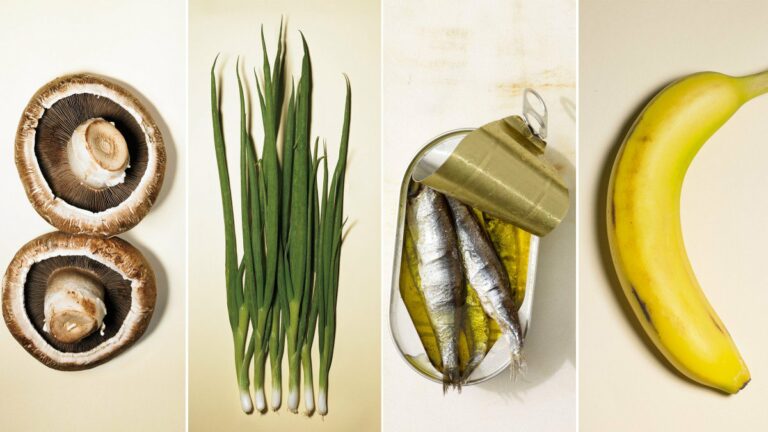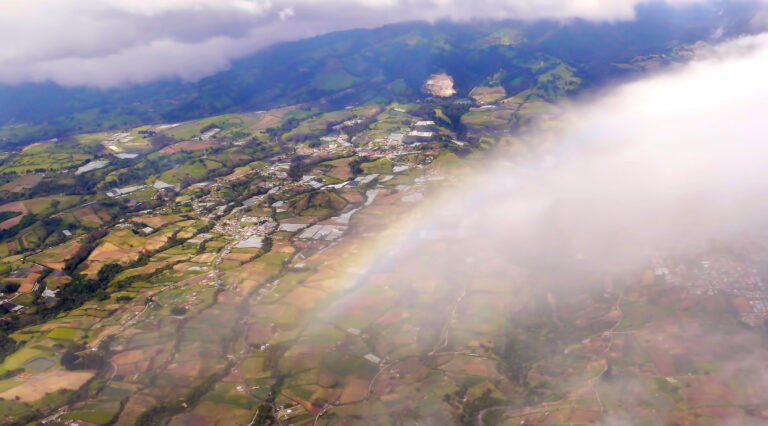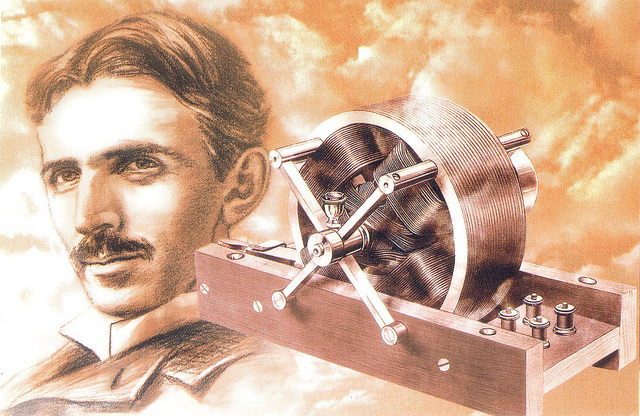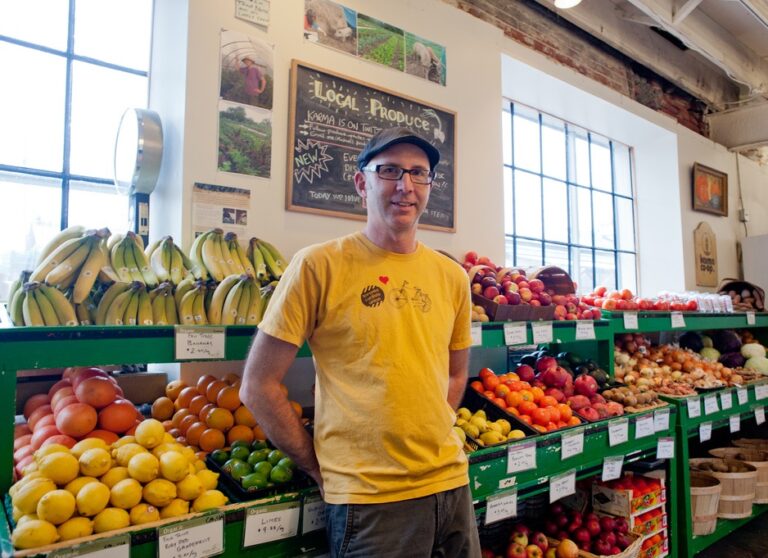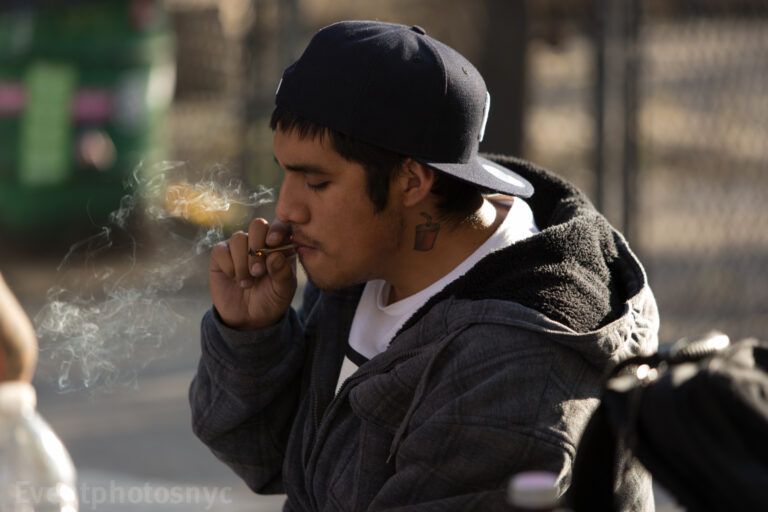Eating Right Can Save the World
“Tell me what you eat and I will tell you what you are.” That’s what the French lawyer Jean Anthelme Brillat-Savarin, who happened to have a deep love of gastronomy, wrote in 1825. A century later, a diet-hawking American nutritionist named Victor Lindlahr rendered it as: “You are what you eat.” I propose revising it further: Tell me what you eat and I will tell you how you impact the planet.
Most of us are aware that our food choices have environmental consequences. (Who hasn’t heard about the methane back draft from cows?) But when it comes to the specifics of why our decisions matter, we’re at a loss, bombarded with confusing choices in the grocery-store aisles about what to buy if we care about planetary health. Are organic fruits and vegetables really worth the higher prices, and are they better for the environment? If I’m a meat eater, should I opt for free-range, grass-fed beef? Is it OK to buy a pineapple flown in from Costa Rica, or should I eat only locally grown apples?
The science of food’s ecological footprint can be overwhelming, yet it’s important to understand it. For starters, in wealthy societies food consumption is estimated to account for 20 to 30 percent of the total footprint of a household. Feeding ourselves dominates our landscapes, using about half the ice-free land on earth. It sends us into the oceans, where we have fished nearly 90 percent of species to the brink or beyond. It affects all the planet’s natural systems, producing more than 30 percent of global greenhouse gases. Farming uses about 70 percent of our water and pollutes rivers with fertilizer and waste that in turn create vast coastal dead zones. The food on your plate touches everything.
“If you look at the heavy-hitter list of global-scale changes that are human induced, how we feed ourselves is invariably near the top,” says Peter Tyedmers, a professor at Dalhousie University’s School for Resource and Environmental Studies (SRES) in Halifax, Nova Scotia, who has been studying the world’s food systems for 15 years. “But the great thing about food is that we have choices, and we have the opportunity to effect change three times a day.”
So what does a sustainable diet actually look like? I’ve thought a lot about my food choices and became a vegan a few years ago, but I still don’t know all the answers. So I set out to find them.
I didn’t go hunting for a crazed notion of perfection. I was simply looking for an attainable way to eat-whether you’re a vegan, a vegetarian, or an omnivore. Here’s what I discovered.
Paleo Is Stupid
One of my first stops is with Tyedmers. On a surprisingly warm evening for September in Halifax, he and dozens of SRES students are gathered on the back deck of a modest clapboard house to celebrate the start of the term. The only strange thing is what I see on many plates: hamburgers.
Admittedly, chicken and veggie burgers are also available. But the fact that an environmental-studies cookout features beef-perhaps the most vilified of all foods in terms of planetary impact-reminds me of the deep tension that exists between the urgency of what we know and the inertia of how we live. We love our meat. And any conversation about food and sustainability has to start with it.
Before I arrived, Tyedmers pointed me to a few landmark studies, the results of which are hard to ignore. Eighty percent of the world’s agricultural lands are allocated to animals, either for pasture or to produce food for them. More than 20 percent of all water consumed is used to grow grain to feed livestock. A 2013 United Nations Food and Agriculture Organization study estimated that livestock accounted for 15 percent of greenhouse-gas emissions, about the same as the entire global transport sector. Other analyses, which argue that the UN estimate doesn’t adequately account for things like the CO2 produced by the respiration of tens of billions of farm animals, estimate that livestock might be responsible for up to 51 percent of global emissions. “Meat is heat,” environmentalists like to say.
The type of meat you eat matters, too. A 2011 life-cycle analysis by the Environmental Working Group, a Washington, D.C., nonprofit, ranked the climate impact of various meats. Lamb was the worst offender: for every one kilogram (or 2.2 pounds) consumed, the EWG estimates that 86.6 pounds of greenhouse gases are produced. Beef was next, at 59.5 pounds of greenhouse gases. Then pork, at about 26.5 pounds. Chicken, at 15.4 pounds, is the most climate-efficient farmed meat.
Meat is equally disproportionate in its thirst for water. Beans and lentils require five gallons of water per gram of protein produced, chicken nine gallons, and beef 29.6.
Reductions in meat consumption can deliver outsize benefits to anyone trying to eat more sustainably. “The question isn’t beef or no beef,” says Tyedmers, who eats it about five times a year. “It’s the right quantities of it. There are grasslands on the planet that can support beef, but we need to focus on portions and frequency.”
The average American currently packs away a staggering 185 pounds of meat a year, the equivalent of more than eight ounces a day. Yet the USDA’s 2010 dietary guidelines recommend just 3.7 ounces of meat per day-about a palm-size burger-which comes out to around 84 pounds per year. Eating the recommended amount would mean a 55 percent cut in meat consumption.
Here’s a sense of what the planet might reap in return. A 2015 study conducted by the journal Frontiers in Nutrition concluded that a diet that is vegetarian five days a week and includes meat just two days a week would reduce greenhouse-gas emissions and water and land use by about 45 percent.
Does eating grass-fed, free-range meat let you off the hook? Not really, because meat takes a toll no matter how it’s raised. Studies actually show that a factory-farm animal emits fewer greenhouse gases than a free-range one, because it lives a shorter life. But Greg Fogel, a senior policy specialist at the National Sustainable Agriculture Coalition, points out that factory farms in the U.S. produce 13 times as much sewage as the entire human population and that environmental impact is about more than greenhouse gases. “The meat you do eat should be grass-fed meat from managed grazing operations,” he says. “Rotational grazing systems recycle manure as fertilizer, improve wildlife habitat, and enhance plant root systems, increasing soil quality, water infiltration and flood control, and carbon sequestration.”
Right about now you might be thinking, Mmmmm, bacon. You might also be thinking, If I don’t eat much meat, how will I get enough protein? Not to worry. “We don’t need nearly as much animal protein in our diets as we currently enjoy,” Tyedmers says.
He’s right. The average American should consume about 0.36 grams of protein per pound of body weight per day, which works out to 70 grams of protein a day for a man. Recommendations for athletes range from 98 grams of protein a day for a weekend warrior to as much as 176 grams for competitive endurance athletes.
These aren’t difficult targets to hit. In the U.S., even vegetarians get about 27 percent more protein than the recommended daily allowance. Omnivores really pack it in, eating 60 percent more protein than a body needs. The extra protein is simply excreted, which Tyedmers derisively refers to as “pissing sustainability away.” The planetary implications of the protein-obsessed paleo diet, in particular, produces an ire rarely seen in professors of the environment-or Canadians.
“That’s an insane way to eat,” Tyedmers scoffs. “They should be clubbed.”
Get Smart About Seafood

Tyedmers and I move on to the topic of seafood. He stands and starts rummaging through a box of old fishing gear he has accumulated over the years while studying fisheries. “When it comes to nitrogen and phosphorous, greenhouse gases, and other global-scale phenomena, absolutely most seafood is much better than most terrestrial animal production,” he says.
Any assessment of seafood sustainability has to involve a careful look at stock management and how much bycatch is involved in the fishing method. Sorting through all the data is hugely complicated. I wrote about sustainable seafood for this magazine in June 2015, and I recommended using the Monterey Bay Aquarium’s Seafood Watch app when considering what’s on offer at the fish counter or when dining out. The app uses a clear rating system to rank sustainability and does the hard work for you.
But Seafood Watch’s ratings don’t yet include climate impact, which adds up. Seafood caught by bottom trawling or from pots and traps, for example, burns a lot of diesel as the boats work back and forth over a fishing ground. (Bottom trawlers also tear up the seabed.) So if you’re a fan of trawled Norwegian lobster, sold as scampi, you’re tucking into a hard-shelled climate bomb that exceeds most beef in terms of greenhouse-gas emissions.
As it happens, the seafood with the smallest carbon footprint is frequently the seafood that’s best to eat if you’re looking to reduce pressure on wild fisheries. Mussels, the only animal protein I still eat, have more of a carbon “toeprint,” at one pound of greenhouse gases per pound of mussels. Clams and oysters are similar, and sardines are a climate-friendly superfood. Mackerel, herring, and anchovies are also relatively easy on the climate-if they aren’t caught by a trawler. If you can’t stand the smaller, oilier fishes, U.S.-caught Alaskan pollock, which comes from a reasonably managed fishery, has a modest climate impact, making it the real chicken of the sea.
Aquaculture, or fish farming, is equally method dependent. Aquaculture systems that don’t filter and recirculate the water, like net pens in the ocean, are on average comparable to poultry and pork in terms of greenhouse-gas emissions. Land-based recirculating aquaculture, with its climate-controlled facilities and electricity demands, can be more than twice as greenhouse-gas intensive as aquaculture that doesn’t recirculate. So catfish and tilapia farmed in ponds or net pens are more climate-friendly than the same fish from recirculating farms. How about consumer-favorite farmed salmon? According to EWG’s calculations, farmed salmon is comparable to pork’s somewhat hefty footprint.
Weighing all the nuances can make seafood selection a head-scratching process of trade-offs, even for an environmental-studies professor. “For every pound of Nova Scotia lobster I buy there was a pound of bait used, and that was mostly herring. And that herring was better food for me and would have fed more people,” Tyedmers tells me, noting that some lobster fisheries in the U.S. use three times as much bait. “Then you throw in the diesel fuel. Does that mean I don’t eat lobster? No, but I do it with consciousness and intent, and on a special occasion.”
Good advice. Or stick to mussels.
Vegans Aren’t Perfect, Either

Clearly, eating less meat has big environmental payoffs. But what about not eating it at all? I’d never crunched the numbers to find out how much more climate-friendly a plant-based diet really is. The results are telling.
For example, in the Frontiers in Nutrition study, researchers compared the greenhouse-gas, water, and land footprints of a balanced 2,000-calorie vegetarian diet, including eggs and dairy, with those of a balanced 2,000-calorie omnivore diet that included one serving of meat per day: a 5.3-ounce steak. The vegetarian diet reduced greenhouse-gas emissions by 63 percent and required 61 percent less land and 67 percent less water.
Another study, in the European Journal of Clinical Nutrition, also compared an omnivorous diet to a vegetarian one. It considered a broad array of environmental impacts beyond climate change and land use-including cancer rates, effect on the ozone layer, and waterway pollution-to produce a more complete model. It concluded that the vegetarian diet had just 64 percent of the environmental impact of the omnivore diet.
How much of a bump can you get from giving up eggs and dairy and going vegan? Big enough to take seriously. The 2015 Frontiers in Nutrition study, for example, estimated that a vegan menu has a climate footprint 31 percent smaller than the vegetarian menu and 74 percent smaller than the omnivore menu, and a land footprint 7 percent smaller than the vegetarian and 64 percent less than the omnivore. It also reduces water demand by 9 percent over the vegetarian and 70 percent over the omnivore.
Vegetarians and vegans shouldn’t feel too righteous or complacent, however. When we stop eating meat, we turn to other forms of protein like nuts, legumes, and grains, and these have an environmental footprint worth considering, too.
Take the increasingly popular and thirsty almond. It notoriously takes a gallon of water to produce a single almond, and we’re eating seven times as many now as we did in 1972. Drought-plagued California produces 99 percent of American almonds, so bingeing on almonds and almond milk can be a water-intensive approach to fueling your body. (Good alternatives include coconut and hemp milk.) Nuts in general are an especially water-intensive way to get protein, requiring more than six times the water needed to produce equivalent protein from black beans, lentils, and chickpeas.
Still, perspective is important. Almonds require less than half the water per calorie of beef, and livestock feed and grazing in California sucks up more than twice the water used by almond and pistachio growers. Other healthy nonanimal calories, from cereals, legumes, roots, fruits, and vegetables, require about one-fifth the water used to produce the same number of animal calories.
Plant-based protein choices also carry different environmental costs. Wheat accounts for one-fifth the greenhouse-gas emissions of water-thirsty rice per gram of protein. Legumes are even better, at one-quarter the emissions of wheat. Being thoughtful about protein alternatives yields even more environmental payoff. Lentils and chickpeas, for example, are better than soybeans at fixing nitrogen in the soil and help you avoid soy’s GMO issues. And quinoa is packed with protein and grows well in a variety of soils.
Another fast-growing category of plant-based protein is meat substitutes -or meat methadone, as I think of them-often made of pea and soy proteins. I have tried most of them and tend to think that you can cook better food by delving into cuisines like Indian and Thai, which offer delicious recipes based on vegetables. But for anyone who simply can’t get beyond a craving for something meat-like, substitutes that contain no animal products produce about one-third the greenhouse gases of poultry.
While it’s clear that eating a more vegetarian or vegan diet takes pressure off the planet’s resources, former New York Times food columnist Mark Bittman doesn’t want conscientious eaters to feel it’s all or nothing. Bittman has long encouraged people to shift toward a more plant-based diet and is now partnered with a vegan-meal home-delivery service called the Purple Carrot.
“I’m not a vegan,” he says. “I don’t think people need to be vegan. I don’t think that many people will become vegan. We could eat 90 percent less meat and be fine.”
You Should Go Organic

I live with a wife who’s a carnivore and two kids who are vegetarian, but the biggest debate in my household is over whether to buy organic or conventional fruits and produce. Based on vague notions that organic is better for the environment and aversions to the idea of herbicide- and pesticide-coated food, I am willing to pay the higher price for organic. My wife, Ilana, isn’t.
To find out if my organic preferences are worth it, I head to southern Pennsylvania, to the rolling 333-acre farmlands of the Rodale Institute, home to the longest-running side-by-side, organic-versus-conventional-farming trial in the U.S., to meet with Kristine Nichols, a soil microbiologist and Rodale’s chief scientist.
Organic farming, Nichols tells me, is really about the health of the soil and the ecosystems producing our food. Nichols wants to show me the difference between soil from conventional agriculture, which uses chemical fertilizers and pesticides, and soil from what Rodale calls regenerative organic agriculture, which uses natural pest management, extensive cover crops, and natural fertilizer like manure.
Nichols is wearing jeans and a T-shirt, and her brown hair is pulled back in a loose ponytail. She ushers me into a nondescript cinderblock shed, where the air is pungent with the smell of dirt. Nichols rummages through a pile of clear three-foot-long tubes containing core samples from Rodale’s farming-systems trial, and she arranges two of them-one organic, the other conventional-next to one another. The tops of the tubes, where the soil comes from the surface, are dark and chocolatey in color. This is the topsoil, Nichols explains, the prime growing layer known to scientists and farmers as the A horizon. She points out that the A horizon in the organic soil extends significantly deeper than in the conventional-soil sample, adding that there is more earthworm and other biologic activity throughout most of the organic-soil tube.
It takes the planet about 1,000 years to build an inch of topsoil. Rodale’s organic methods are changing that equation. “The soil’s got more microbial activity, and we’re getting organic matter deeper down into it,” Nichols says. “We’re building our A horizon. We grew three inches in 35 years.”
This is an important achievement, given that an estimated 90 percent of U.S. cropland loses soil at a rate 13 times what’s sustainable. “Feed the soil, not the plant,” organic farmers like to say. Apparently, it works.
Nichols then takes me out to the farming-systems trial to see late-summer conventional corn next to late-summer organic corn. For the conventional side of the trial, Rodale uses the most up-to-date techniques, which include GMO varieties and the same carefully calculated quantities of fertilizer and herbicide that commercial farmers use. Still, the conventional corn is not looking so good. The leaves are yellowish, and the plant has reddish blotches, signs of phosphorous and nitrogen deficiency. Heavy spring rains washed a lot of the fertilizer away, followed by a hot and dry August.
The organic corn just a few plots away looks greener and more vibrant. Instead of synthetic fertilizer, cover crops have been used to feed the soil with carbon and nutrients and act as a weed-deterring mulch layer. The richer soil, and the more active relationship between the corn plant and the A-horizon microbial world, helped the corn weather the dry summer better. And Rodale’s data shows that its organic corn yields 31 percent more in drought conditions than its conventionally grown corn, which is important in a climate-changing world.
Rodale’s organic growing methods deliver other environmental benefits. They use 45 percent less energy and produce 40 percent fewer greenhouse-gas emissions than the conventional growing systems. Other studies confirm the good news. One concluded that an omnivore diet of organic meat and vegetables has an environmental footprint 41 percent smaller than that of a conventional omnivore diet, and an organic vegetarian or vegan diet gets roughly the same benefit. When you consider that the estimated environmental and health-care costs of pesticide use in the U.S. every year is in the billions, I start to feel pretty good about my side of the organic-versus-conventional marital debate.
Finding an abundance of organic options usually means shopping at a higher-end grocery store or a farmers’ market, or buying a CSA share from a farm that uses regenerative organic practices. Whole Foods is trying to make sustainably farmed products easier to identify by rolling out Responsibly Grown ratings of Good, Better, and Best for fruits, flowers, and vegetables. Products that meet the Certified Organic standard of the USDA are automatically granted a Good rating but have to meet additional criteria to move up the scale.
“Responsibly Grown is designed to give our shoppers more information about the products they’re buying,” says Liz Burkhart, a spokeswoman at Whole Foods. “This includes areas like water conservation, energy use, and farmworker welfare.”
As for the higher prices of organic, I deal with the premium by buying smaller quantities and cooking moderate portions, which is beneficial to my wallet and to my family’s calorie count.
Buy Local

While what you eat is important, how it gets to your plate matters, too. One morning before dawn, I head into an industrial zone of Capitol Heights, Maryland, where I find Zeke Zechiel overseeing the morning deliveries for Washington’s Green Grocer. Zechiel used to be a nightclub owner, but 21 years ago he and his wife, a chef, decided they wanted to offer their community a better way to buy quality produce. Washington’s Green Grocer delivers subscribers a weekly box of organic (or conventional) fruits and vegetables. I find it a convenient way to buy organic.
Zechiel is 51, wearing cargo shorts, a T-shirt, and Keen sandals. He tries to buy as much as he can from farms within a few hundred miles of him. I see lots of boxes from the Lancaster Farm Fresh Cooperative in Pennsylvania. But I also see Mexican avocados, California brussels sprouts and cauliflower, and organic bananas imported from Central and South America.
“To sustain the company, there are certain things people want to have,” he says. “If we don’t have them, they won’t use us.”
Zechiel worries about the food miles required to give his subscribers the fruits and vegetables they expect. To address that concern, he launched a local-only box, which is now bought by about 20 percent of his 3,500 customers and is his fastest-growing offering. But he ruefully admits that he can’t make it both organic and local year-round, which he calls the holy grail, because it’s hard to get a wide selection of organic fruits from the wet, pest-prone mid-Atlantic region.
“If you want to eat local and organic year-round, you have to stock up and make jams and freeze or can stuff, which is an enormous effort,” he says. “It’s really hard to find someone so committed.”
Even his dedicated local-box customers often add on imported bananas. “People just gotta have their Saturday smoothies,” he says.
Food miles and the greenhouse-gas emissions they cause aren’t easy to understand. So much depends on the efficiency of the transport network. Anything flown in-say, fresh salmon from Alaska or cheese from Europe-arrives with a sizable climate footprint. But bananas or oranges packed tightly onto a container ship or a large truck do not. How do you compare a fully loaded semi driven cross-country from California with a local grower’s pickup truck that may have rolled only 100 miles to a farmers’ market with a few boxes in the bed?
Still, according to one analysis I found, buying local can reduce the impact of vegetable production by 10 to 30 percent. Other researchers have calculated that produce moving through the national transportation network that supplies large grocery stores travels an average of about 1,518 miles and emits five to seventeen times the greenhouse gases of regional and local food distribution. In contrast, locally sourced foods travel an average of just 45 miles.
So it makes sense to buy local whenever possible, another reason to spend time at the nearest farmers’ market. If you’re really dedicated to sustainable eating, that means eating seasonally as well. No more grapes and strawberries from Chile in February. I can only hope Zechiel will start selling local canned peaches to get me through winter.
You’re Throwing Away Too Much Food
No matter where you come down on meat, organic, and shopping locally, there are two powerful sustainability strategies you can put to work right now. The first is to eat less. If the average omnivore, who eats around 3,500 calories a day, instead ate a diet closer to his basic nutritional requirement of 2,500 calories, he would likely reduce his environmental footprint by about 30 percent. An active person who works out daily needs closer to 2,800 calories, yielding a roughly 20 percent cut.
The second strategy: waste less. In the U.S., 40 percent of food-worth an estimated $165 billion-is thrown out every year. It’s an environmental and social-policy tragedy. According to the USDA, which in September announced an initiative to try and cut American food waste in half, the average family of four trashes two million calories a year, worth nearly $1,500. As a result, 25 percent of America’s water is used to produce food that is never eaten, and an estimated 28 percent of the planet’s agricultural land is used to grow food that ends up in the garbage. Food is the single largest solid-waste component of America’s landfills-an estimated 80 billion pounds-and emissions from it are equivalent to the greenhouse-gas output of 33 million cars.
Wasting resource-intensive meat and seafood is particularly hard on the planet, yet consumers throw away an estimated 40 percent of the fresh and frozen fish they buy, 31 percent of the turkey, 25 percent of the pork, 16 percent of the beef, and 12 percent of the chicken. Peter Tyedmers says that consumer demand for fresh seafood leads to a lot of waste at the fish counter. There, if it isn’t sold by a certain date, it gets tossed.
“I have thrown out halibut steaks. They get lost in the fridge,” he says ruefully. “If you buy that halibut steak frozen, it just stays in the freezer.”
Restaurants and grocery stores are doing more to donate excess stock to food banks, and national food-service operators such as Aramark are discovering that innovations-like removing trays from cafeterias, which make it too easy to load up-can lead to dramatic reductions in waste. But how we personally shop and handle food at home is by far the biggest source of food waste, accounting for an estimated 47 percent. Restaurants are the next biggest, at 37 percent.
To combat this, I shop more often, buying for a day or two at a time instead of a week, so that less food gets lost in a packed refrigerator. I often ignore expiration dates, and I derive distinct pleasure from cooking up hashes, soups, and curries using all the leftovers I find on the edge of going bad. I have become the food-waste equivalent of the person who goes around turning everyone’s lights off. It can be annoying, but it works.
The Future Tastes Good
I know all this conjures an image of an enviro-scolding hippie living on lentils. But fear not: eating more sustainably can be delicious.
For reassurance, I check in with Dan Barber, a dynamo chef and a seriously deep food thinker. First at his restaurant Blue Hill in New York City, and then at Blue Hill at Stone Barns, which he opened near Tarrytown, New York, in 2004, Barber has been on a quest to create a more sustainable menu and prove that it can be extraordinary. That led him to a profound appreciation for the natural productivity possible at his family’s 138-acre New England farm, called Blue Hill, using regenerative organic methods. Today the farm rotates and produces a variety of crops and vegetables and uses livestock like cows, chickens, and pigs to spread and work nutrients into the soil.
Barber sees eating and food production as a negotiation with the landscape. What can it reasonably provide? How does a chef make the best use of everything it offers? How can the foods we eat sustain and build its fertility? When he looked at his menus and his cooking through that lens, he realized that he needed to reinvent the architecture of the American plate. Instead of a massive chunk of animal protein at the center flanked by a few vegetables, Barber envisioned the reverse. Vegetables and legumes or grains would be the headliners at the center, and animal protein would be the judicious accompaniment. Imagine a carrot steak, Barber proposed, with a side of braised second cuts of beef. He calls this the “third plate,” which became the title of his excellent book about his journey. Diners and restaurant reviewers have been ecstatic.
“It’s not to say you can’t enjoy a steak, but we really need to think hard about meat,” Barber says. “You can take very small amounts of meat and get great satisfactory umami”-or savory flavor.
It’s a hopeful vision, and the rest of the world is trying to catch up. Near the end of my visit in Halifax, Tyedmers and I eat lunch at Lion and Bright, an organic restaurant in the North End. I have an eggplant, tomato, and green onion curry wrap; Tyedmers orders the chili con carne. “I’m a sucker for good chili,” he sighs. I ask Tyedmers why, given how much he knows about the environmental impacts of meat, he continues to eat it.
“If every male on the planet ate the way I do, we would have less of a problem, but we would still have a problem,” he says. He pauses, then says that it doesn’t make sense to focus all your sustainability efforts on just one facet of life, like eating. What matters is the overall footprint of the choices you make. He tells me that when he got married, he was apprehensive about having children, because population is such an engine of environmental crisis. His wife wanted the experience of raising children. In the end, they settled on one child.
It’s a good point. Ilana and I have two children, and whatever choices I make with regard to the sustainability of my diet or lifestyle will likely pale next to that second child’s life of consumption. Tyedmers made a hard choice when it came to reproduction but still eats meat. I made a hard choice to stop eating meat but had two children. I can never regret having a beautiful second child in my life, but I have to confess that Tyedmers’s choices are probably of greater benefit to the planet than mine. I also consider the irony that I flew to Halifax to report a story on sustainability, the equivalent of eating roughly 40 pounds of steak.
Sustainability, it seems, is a little like religion: we’re all striving for an ideal, but it’s difficult, if not impossible, to achieve perfection. We sin a little here. We sin a little there. The omnivore who hunts for an elk each fall for his meat-or maybe even eats roadkill -and raises his own chickens for eggs, grows his own organic vegetables and fruit, and cans food for the winter is eating pretty damn sustainably. So is the backyard-gardening vegan. But that’s a degree of virtue many of us will never achieve.
Still, a few simple adjustments help a lot. Stop worrying so much about not getting enough protein, and remember that plant-based protein is a lot easier on the planet than animal protein. Buy organic food whenever you can. Source your food as locally as possible, and eat seasonally to avoid racking up major food miles. Eat less and waste less. Be open-minded and creative about new cuisines. Relax. Have fun. Sustainable eating isn’t synonymous with masochism.
“We think of everything related to the environment as something we are doing wrong or have to give up,” Dan Barber says. “But people can do something about it in a way that is pleasurable. We can actualize change through hedonism.”
Who can’t rally behind that?
Correspondent Tim Zimmermann wrote about sustainable seafood in June 2015.
California Livestock Produce 1,400 Times More Methane Gas than L.A. Leak
So you may have heard that since the end of October, a storage well that is operated by SoCal Gas in Aliso Canyon, outside of Los Angeles has been leaking methane. The Environmental Defense Fund (EDF) that so far, 78,000 tons of methane has been released and that number is steadily climbing.
This is bad people. Methane is greenhouse gas that has a global warming potential 86 times greater than that of CO2 on a 20 year time frame. The EDF says that the daily leakage has the same 20-year climate impact as driving 7 million cars a day.
But is this really the worst U.S. environmental disaster since the BP oil spill? What about… livestock?
According to Mother Jones 70,000 pounds of methane is being released every hour which equates to 1.68 million pounds per day.
In the state of California, there are 6.95 million cows. The average cow produces between 250-500 liters of methane every day. The cows residing in California alone are emitting over 193 million pounds of methane every single day.
This means that currently, cattle being raised for meat and dairy are emitting 1,448 times more methane than the Aliso Canyon gas leak!
This methane leak is a terrible disaster that likely won’t be fixed until spring of 2016 and unfortunately is all but out of our hands. So why not help alleviate, or not contribute to even more methane being emitted into our atmosphere, and adopt a vegan diet today?
www.cowspiracy.com/take-action
Ten Tips From A Shaolin Monk On How To Stay Young Forever
People always say health is the most important thing but how many people live by this belief? We need to start today. In order to help us stay on the path to health I have translated an extract from one of the Shaolin Classics. Written by a monk who was a great martial artist and scholar, here he gives advice to lay people as to how to stay young and healthy.
Ten Tips From A Shaolin Monk On How To Stay Young
1)
Don’t think too much. Thinking takes energy. Thinking can make you look old.
2)
Don’t talk too much. Most people either talk or don’t. Better to don’t.
3)
When you work, work for 40 minutes then stop for 10 minutes. When you look at something all the time, it can damage your eyes and also your internal organs and peace.
4)
When you are happy, you need to control your happiness, if you lose control then you damage your lung energy.
5)
Don’t worry too much or get angry because this damages your liver and your intestines.
6)
When you eat food don’t eat too much, always make sure you are not quite full as this can damage your spleen. When you feel a little hungry then eat a little.
7)
When you do things, take your time, don’t hurry too much. Remember the saying “Hasten slowly you will soon arrive.”
8)
If you only do physical exercise all the time and you never do Qigong this makes you lose your balance and you will become impatient. You lose the Yin of your body. Exercise & balances, the Yin and the Yang.
9)
If you never exercise, just peace, meditation, soft training, Qigong, then you will loose your Yang energy.
10)
Shaolin Gong Fu gives you everything. The purpose of our training is to balance our Yin and Yang. How many hours is not important. It’s down to knowing what your body needs.
About the Author
Shifu Yan Lei is a 34th generation Shaolin Gong Fu Master. Visit his blog here, and you can sign up to his newsletter, monthly training tips and archives. He also offers DVDs and meditative aids.
Image Credits: pxleys
Credits: By: Shifu Yan Lei
Johnny Depp Intends To Buy Indian Reservation And Gift It Back To The Native American People
Actor Johnny Depp wants to purchase the historical landmark Wounded Knee and gift it back to the Native American people to help make right what went so wrong in 1890. by Amanda Froelich
In an interview with The Daily Mail on Sunday, well-known actor Johnny Depp disclosed that he intends to buy Wounded Knee, a national historic landmark, and gift it back to the Indian people. He shared that he is ready to spend millions in order to give control back to those that should have inherited the land, and help make right what went so wrong back in 1890.
“It’s very sacred ground and many atrocities were committed against the Sioux there,” he said. “And in the 1970s there was a stand-off between the Feds (Federal government) and the people who should own that land. This historical land is so important to the Sioux culture and all I want to do is buy it and give it back. Why doesn’t the government do that?“
Perhaps it was Depp’s stint playing the role of Tonto in the box office production The Lone Ranger that inspired him to pursue such action; whatever the inspiration, the activism will most certainly be appreciated by many.
Depp spent a massive amount of time doing research about the various tribes and received the approval from many Native American groups before the filming of The Lone Ranger began. His respect for the Native American culture runs deep, and he wanted to make sure that all those involved with the production were doing right by “the Indian” in the way they portrayed the various tribes.
“The idea was to give back to them and to make sure that we got it right,” he said in the lengthy interview.
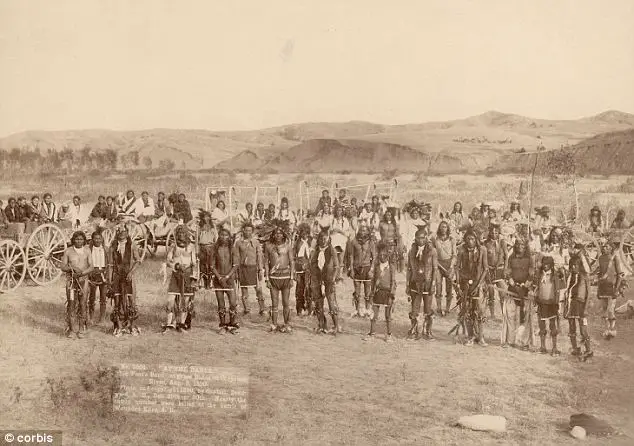 “This picture of the Miniconjou Sioux band was taken near the site of the Wounded Knee massacre one month before the December 1890 massacre where hundreds of Indians were killed.”
“This picture of the Miniconjou Sioux band was taken near the site of the Wounded Knee massacre one month before the December 1890 massacre where hundreds of Indians were killed.”
Credit: Corbis
According to the news source, Depp is intent on following through with the aforementioned plan. The asking price for Wound Knee is $3.9 million, which is a fraction of what Depp makes from one production. That said, there is little standing in the way of him keeping true to his promise.
“I am doing my best to make that happen. It’s land they were pushed on to and then they were massacred there. It really saddens me,” he stated.
The area near Wounded Knee Creek on the Lakota Pine Ridge Indian Reservation (in South Dakota) is where the last major battle of the American Indian Wars took place. The fight reportedly began when an elderly tribesman refused to hand over his weapon. Troops attacked, and at least 150 members of the Lakota tribe – including men, women, and children – were killed.
Honoring the Native American culture by purchasing the historical location will be a major step in helping to make right what went so wrong over a hundred years ago. The event has caused outrage from historians as at least 20 American soldiers were awarded the Medal of Honor for their role in the massacre. Now, at least, the public is more educated on the solemn history and can do what’s right moving forward.
What are your thoughts on this news? Comment below and share this article!
How To Turn Into A Tree After You Die: The End Of Cemeteries
We tend to think that there are only 3 main options for what we can do with our bodies once we die. We can either have it buried in a coffin, cremated, or donated to science. There is another option that is available now which completely shatters the traditions of our society and replaces them with a much more practical (and even spiritual) alternative. – Steven Bancarz

Bios Urn is a funerary urn made from biodegradable materials (such as coconut shell and cellulose) that will turn you into a tree after you die. Inside the urn there is a pine seed, which can be replaced by any other seed or plant, and will grow to remember your loved one. Instead of being buried in just another coffin in the ground, we can become part of a forest and give back to our environment.
When planted, the tree seed is nourished by and absorbs the nutrients from the ashes of your body which are contained inside. The urn itself is made from coconut shell and contains compacted peat and cellulose. The ashes are mixed with this, and the seed placed inside. You even have the choice to pick the type of plant you would like to become, depending on what kind of planting space you prefer. Once your remains have been placed into the urn, it can be planted and then the seed germinates and begins to grow.
How A Biodegradable Urn From Bios Works
1. The urn comes assembled and ready to be taken to the place chosen for the regeneration.
2. Remove the seal and the outer packaging of the urn.
3. Put the ashes in the urn’s lower part. Close it with the top part and put the soil with the seed in it.
4. Bury the urn in fertile soil with its top level with the soil surface and water it.
5. In a few days the seed will germinate and your tree will begin to grow.
6. The tree will continue to grow year after year.

I think its pretty cool that we have the option of replacing cemeteries (which usually feel lifeless and cold) with forests that are teeming with life. The cool thing is, they have bios urns available for your pets as well.
If you would like to contribute to a more sustainable world by purchasing a Bios Urn for yourself, a loved one, or a pet, or if would would like to learn more about them, you can do so by click HERE.
Source: UrnaBios.com
Costa Rica Powers 285 Days of 2015 With 100% Renewable Energy
In March, EcoWatch reported that Costa Rica powered the first 82 days of the year solely with renewable energy. Now that we’re closing in on the end of the year, the Costa Rican Electricity Institute (ICE) announced that the country ran entirely on renewables for 285 days between Jan. 1 and Dec. 17.
“We close 2015 with 99 percent clean energy!” ICE wrote on Facebook, saying that “the energy produced … in 2015 reaches 98.95 percent with renewable sources as of December 17.”
“We are closing 2015 with renewable electricity milestones that have put us in the global spotlight,” ICE electricity division chief Luis Pacheco told AFP.
The majority of the country’s energy (75 percent) comes from hydropower, thanks to a vast river system and abundant rainfall, and the rest of its renewables come from geothermal, biomass, wind and solar. Despite a very dry year, ICE said it was ahead of its renewable energy targets and Pacheco predicted that 2016 would be an even better year because a new $2.3 billion hydroelectric plant will be coming online.
The country reportedly wants to move away from its dependency on hydropower, though, and harness more of its electricity needs from geothermal and wind. It plans to retire its heavy fuel oil-powered Moin plant in 2017 and wants to move its transportation sector away from fossil fuels. The country has made all this progress, while reducing overall energy costs, which fell by 12 percent this year and the ICE expects costs to keep falling.
“The government has pledged to build an electric train which will be integrated with public buses,” Gabriel Goldschmidt, regional head of infrastructure for Latin America and Caribbean at the International Finance Corporation, which is part of the World Bank, told the Huffington Post. “There is also a proposal to start replacing oil-powered cars with electric cars as part of a new bill in congress that aims to offer consumer incentives to lower the prices of these cars. This would have multiple benefits including better air quality.”
Costa Rica’s heavy reliance on hydropower has been criticized by some. Gary Wockner of Save the Colorado argues that hydropower is actually “one of the biggest environmental problemsour planet faces” and a ” false solution” for addressing climate change.
“Hydropower has been called a ‘methane factory’ and ‘methane bomb’ that is just beginning to rear its ugly head as a major source of greenhouse gas emissions that have so-far been unaccounted for in climate change discussions and analyses,” Wockner said last month.
Still, the country is among the vanguard of nations around the world moving towards a 100 percent renewable energy future. Several countries have hit impressive benchmarks for renewables in just a few short years. And many places have already made the transition to fossil-fuel-free electricity. Samso in Denmark became the world’s first island to go all in on renewables several years ago. Most recently, Uruguay, three U.S. cities– Burlington, Vermont; Aspen, Colorado; and Greensburg, Kansas-along with Kodiak Island, Alaska, have all made the transition.
San Diego, Vancouver, Las Vegas and other major cities around the world have pledged to go 100 percent renewable. Sweden made headlines earlier this year when it pledged to be among the first countries to go fossil free. Hawaii pledged to do so by 2045-the most ambitious standard set by a U.S. state thus far. Several other islands, including Aruba, Belize, St. Lucia, Grenada, the British Virgin Islands, the Bahamas, Turks and Caicos, and San Andres and Providencia have pledged to go 100 percent renewable, through the Ten Island Challenge, created by Richard Branson’s climate group the Carbon War Room.
Greenpeace and researchers at Stanford and UC Berkeley have laid out plans for every state in the U.S. to adopt 100 percent renewables and a Greenpeace report published in September posits the world can achieve 100 percent renewable energy by 2050. Mark Jacobson, one of the researchers from Stanford, said the barriers to 100 percent clean energy are social and political, not technical or economic.
Just last week, Tesla CEO Elon Musk said in an interview that “You could take a corner of Utah or Nevada and power the entire United States with solar power.”
And, it looks as if the Paris climate conference earlier this month helped create market certainty in renewables, as fossil fuel stocks tumbled and renewable energy stocks soared. After the landmark Paris agreement was reached, the coal industry’s European lobbying association feared that the deal meant the sector “will be hated and vilified, in the same way that slave traders were once hated and vilified.”
Photo Credit: Brandon Watson
Bernie Sanders Vows to Protect Organic Farming, Calls Out Monsanto As Presidential Campaign Heats Up
Unlike most of the top candidates, Vermont senator Bernie Sanders has a long history of speaking out against big corporations, factory farming, and the Biotech giants. As early as 1994 he was fighting against companies such as Monsanto using chemicals that impact human and animal health. He was also one of the few senators that introduced the Farm Bill that would require labeling of any genetically engineered ingredients in food.
Unlike another candidate running on the democratic platform Hilary Clinton who fully supports GMOs, Sanders believes that the biotech companies are “transforming our agricultural system in a bad way.” He says that he stands for the right of the people to know what is in our food (through mandatory GMO labeling that he helped pass in Vermont, an effort that the GMO giants are trying to block through the DARK Act) and supports family-owned and organic agriculture.
During a private dinner event on December 27 th, Sanders spoke about how to make sure our food is healthy and our farming is ethical, as well as other big issues that his campaign stands for.
“The debate should be – how do we make sure that the food our kids are eating is healthy food. And having the courage to take on these huge food and biotech companies who are transforming our agricultural system in a bad way,”
– Sen. Bernie Sanders
He also goes off on the fossil fuel industry, saying it’s past due time we start to shift toward renewable and alternative energy.
Perhaps the most exciting part of his speech happens a few minutes in as he describes the food scene in his home state, where organic farming and farmer’s markets are becoming commonplace.

“We have hundreds of farmers markets (in Vermont), you’ll find people buying food, beef and poultry directly from farmers, and there’s a growing farm to school pipeline,”
“It’s something we’ve worked very hard on and I think all over this country people are concerned about the quality of food their kids are eating.”
Sanders goes on to talk about how his own additions to the Farm Bill would help make this vision a reality for people across the country, and also calls out Monsanto on a key food and GMO-related topic that is being completely ignored by the mainstream media once again.
He also gets a few shots in against the factory farm industry. “We need legislation and efforts designed not to protect factory farming, corporate farming but to protect family-based agriculture,” he says.
You can watch the full speech by clicking here.
[Photo Credit: E.Hernandez & DonkeyHotey]
Nikola Tesla’s 5 Lost Inventions That Threatened The Global Elite
Most great inventions fundamentally change the society in which they exist. Since the people at the top of the social structure have more to gain by reinforcing the status quo, they suppress revolutionary technologies favourable to the world but dangerous to their existence. Engineering genius Nikola Tesla was no exception. Here are some of those technologies, ‘they’ don’t want you to know about Nikola Tesla:
Death Ray
Nikola Tesla claimed to have invented a ” death beam” which he called Teleforce in the 1930s. The device was capable of generating an intense targeted beam of energy “that could be used to dispose of enemy warplanes, foreign armies, or anything else you’d rather didn’t exist”. The so-called “death ray” was never constructed because he believed it would become too easy for counties to destroy each other. Tesla proposed that a nation could ” destroy anything approaching within 200 miles … [and] will provide a wall of power” in order to “make any country, large or small, impregnable against armies, airplanes, and other means for attack”. He said that efforts had been made to steal the invention. His room had been entered and his papers had been scrutinized, but the thieves, or spies, left empty-handed.

Tesla’s Oscillator
In 1898, Tesla claimed he had built and deployed a small oscillating device that, when attached to his office and operating, nearly shook down the building and everything around it. In other words, the device could allegedly simulate earthquakes. Realizing the potential terrors such a device could create, “Tesla said he took a hammer to the oscillator to disable it, instructing his employees to claim ignorance to the cause of the tremors if asked”. Some theorists believe the government continues to use Tesla’s research in places like the HAARP facility in Alaska.

Free Electricity System
With funding from JP Morgan, Tesla designed and built Wardenclyffe Tower, a gigantic wireless transmission station, in New York in 1901-1902. Morgan thought the Wardenclyffe Tower could provide wireless communication across the world. However, Tesla had other plans.

Tesla intended to transmit messages, telephony and even facsimile images across the Atlantic to England and to ships at sea based on his theories of using the Earth to conduct the signals. If the project worked, anyone could have electricity by simply sticking a rode into the ground. Unfortunately, free electricity is not profitable. And this system could be incredibly dangerous for the global elite because it could profoundly change the energy industry. Imagine how different the world would be if society didn’t need oil and coal to function? Could the great world powers maintain control? Morgan refused to fund the changes. The project was abandoned in 1906 and never became operational.
The Flying Saucer
In 1911, Nikola Tesla told The New York Herald that he was working on an anti gravity “flying machine”.
“My flying machine will have neither wings nor propellers. You might see it on the ground and you would never guess that it was a flying machine. Yet it will be able to move at will through the air in any direction with perfect safety, at higher speeds than have yet been reached, regardless of weather and oblivious of “holes in the air” or downward currents. It will ascend in such currents if desired. It can remain absolutely stationary in the air, even in a wind, for great length of time. Its lifting power will not depend upon any such delicate devices as the bird has to employ, but upon positive mechanical action.” 
Tesla’s flying saucer was powered by free energy system at a time when the fledgling aviation and motor car industry depended on oil and petroleum. His invention met the same fate as his free energy system.
Improved Airships
Tesla proposed that electrically-powered airships would transport passengers from New York to London in three hours, traveling eight miles above the ground. He also imagined that airships might draw their power from the very atmosphere, never needing to stop for refueling. Unmanned airships might even be used to transport passengers to a preselected destination or for a remote aerial strike. He was never given credit for his invention. However, today, we have unmanned drones carrying out combat missions, supersonic airplanes that fly at amazing speeds and space shuttle technology that can circle the Earth in the upper atmosphere.

It was long suspected that the FBI literally stole all of his work, research, and inventions that he had in his possession when he died. This rumor has now been confirmed by recent, heavily redacted Freedom of Information Act requests released by the FBI.
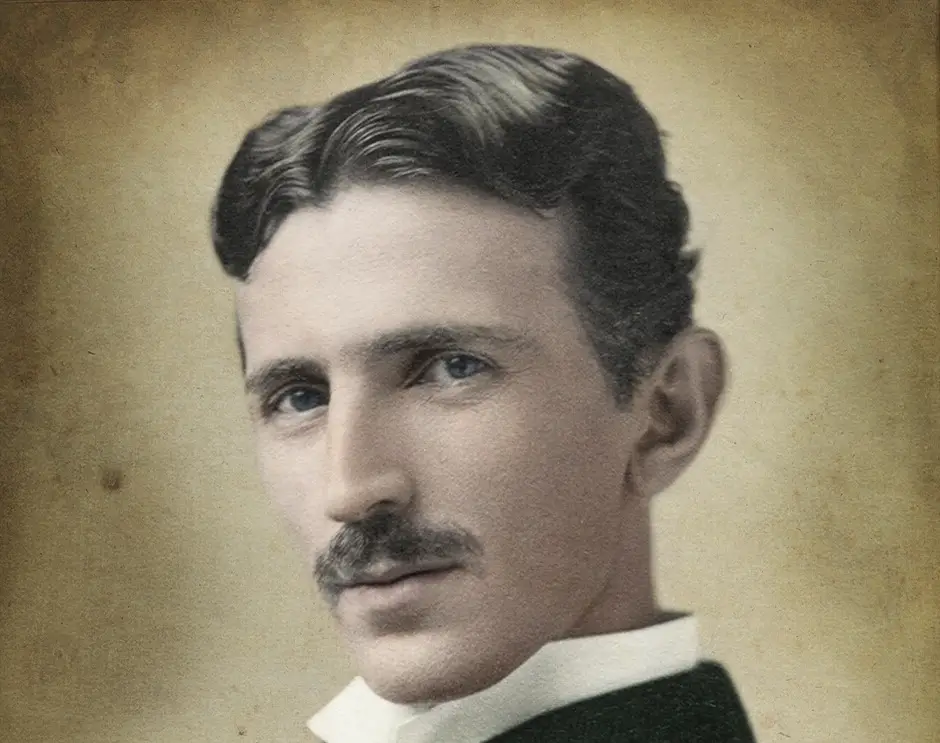
source:
Pot For Parkinson’s? The Scientific Evidence Is Compelling!
Despite the political controversy surrounding medical marijuana use in the country, research has begun to emerge showing that a component of this plant known as cannabidiol (CBD), and which does not have the controversial psychoactive properties associated with tetrahydrocannabinol (THC), may have a wide range of therapeutic applications, including treating conditions that are refractory to conventional drug-based approaches.
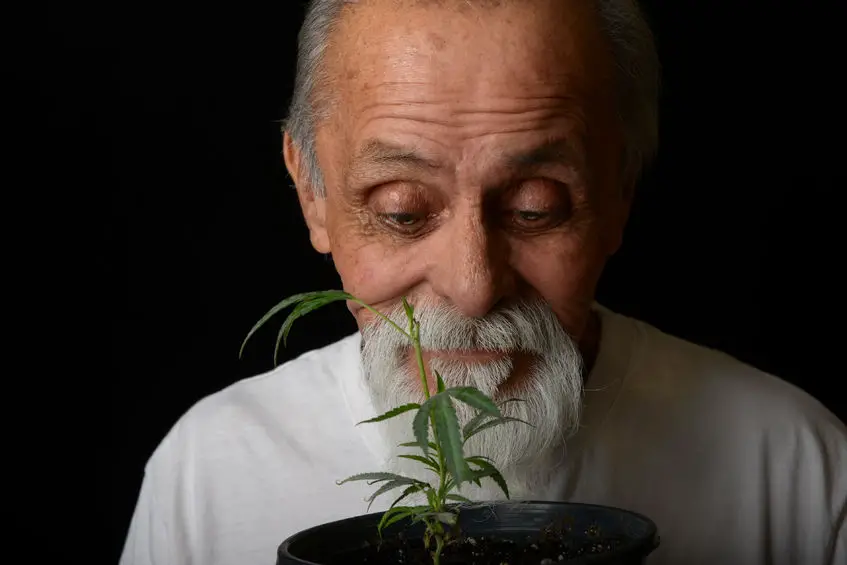 One such condition is Parkinson’s disease, to which there is, at present, no effective conventional treatment. In fact, the primary treatment involves dopamine increasing drugs that also increase a neurotoxic metabolite known as with 6-hydroxy-dopamine, and which therefore can actually accelerate the progression of the disease. This is why natural alternatives that are safe, effective, and backed up by scientific evidence, are so needed today. Thankfully, preclinical research on cannabidiol has already revealed some promising results, including two studies in animal models of Parkinson’s disease (PD) assessing its neuroprotective properties:
One such condition is Parkinson’s disease, to which there is, at present, no effective conventional treatment. In fact, the primary treatment involves dopamine increasing drugs that also increase a neurotoxic metabolite known as with 6-hydroxy-dopamine, and which therefore can actually accelerate the progression of the disease. This is why natural alternatives that are safe, effective, and backed up by scientific evidence, are so needed today. Thankfully, preclinical research on cannabidiol has already revealed some promising results, including two studies in animal models of Parkinson’s disease (PD) assessing its neuroprotective properties:
“In the first one, Lastres-Becker et al. (2005) showed that the administration of CBD counteracted neurodegeneration caused by the injection of 6-hydroxy-dopamine in the medial prosencephalic bundle, an effect that could be related to the modulation of glial cells and to antioxidant effects (Lastres- Becker et al., 2005). In the next year, Garcia-Arencibia et al. (2007) tested many cannabinoid compounds following the lesion of dopaminergic neurons in the substantia nigra with 6-hydroxy-dopamine and found that the acute administration of CBD seemed to have a neuroprotective action; nonetheless, the administration of CBD one week after the lesion had no significant effects (Garcia-Arencibia et al., 2007). This study also pointed to a possible antioxidant effect with the upregulation of mRNA of the enzyme Cu-Zn-superoxide dismutase following the administration of CBD.” [1]
In addition to these animal studies, the following three human clinical trials have been conducted to evaluate cannabidiol’s neuroprotective effects.
- A 2006 study published in Biological Psychology titled, “Dorsolateral Prefrontal Cortex N-Acetylaspartate/Total Creatine (NAA/tCr) Loss in Male Recreational Cannabis Users,” investigated the N-acetylaspartate to creatine ratios (NAA/Cr) in the brain of regular cannabis users through magnetic resonance spectroscopy (H1-MRS) to assess the neurotoxic and neuroprotective effects of cannabinoids present in the drug and found a strong positive correlation between CBD and NAA/Cr in the globus pallidus and putamen.[2] According to the study, “the globus pallidum is the region with the highest amount of CB1-receptors in the brain and the target of neurostimulation in patients with Parkinson’s disease, who developed a strong tremor. Our MRSI results support a positive effect of CBD on the putamen/globus pallidum region in cannabis use. Therefore, it may be promising to test a possible influence of the nonpsychotropic CBD in the onset of Parkinson’s disease.”
- A 2009 study published in the Journal of Psychopharmacology titled, “Cannabidiol for the treatment of psychosis in Parkinson’s disease,”[3] assessed the therapeutic use and neuroprotective effect of CBD in PD patients. The open label study was conducted with six patients with PD-related psychosis. They were administered CBD at doses ranging from 150 mg in the first week to 400 mg in the fourth and last week of treatment (doses were adjusted to optimize the clinical response). The study reported significant improvements in psychosis as well as in the total scores of a scale that measures general symptoms of PD (Unified Parkinson’s disease rating scale – UPDRS)
- A 2014 study published in the Journal of Psychopharmacology titled, “Effects of cannabidiol in the treatment of patients with Parkinson’s disease: an exploratory double-blind trial,” evaluated the effects of cannabidiol in Parkinson’s disease patients, dividing 21 patients into 3 groups of 7 receiving either placebo, cannabidiol (CBD) 75 mg/day or CBD 300 mg/day. Increases in well-being and quality of life were observed in the 300 mg/day groups versus the placebo groups. The researchers hypothesized that these improvements may have been due to cannabidiol’s “anxiolytic,” “antidepressant,” “anti-psychotic,” and “sedative” properties.
These results, taken together with the results from the animal models of PD, indicate that CBD may provide a drug alternative in PD patients. Additionally, a new study published in Toxicology In Vitro titled,”The neuroprotection of cannabidiol against MPP+-induced toxicity in PC12 cells involves trkA receptors, upregulation of axonal and synaptic proteins, neuritogenesis, and might be relevant to Parkinson’s disease,” makes the case for using cannabidiol in PD even more compelling by helping to illuminate some of the molecular mechanisms beneath its benefits.
The study found that cannabidiol protects against the neurotoxin known as MPP(+), which is widely believed to be responsible for the damage to the dopamine-producing cells in the substania nigra of Parkison’s patients, by preventing neuronal cell death and inducingneuritogenesis (a neuro-regenerative process for repairing damaged neurons). This mechanism was found to be independent of the neural growth factor (NGF) pathway, even though it involves NGF receptors. Cannabidiol was also found to increase the expression of axonal and synaptic proteins. The study concluded that CBD’s neuroprotective properties might be of benefit to Parkinson’s disease patients.
For additional research on how cannabis can contribute to mitigating neurodegenerative diseases read our article, “Marijuana Compound Found Superior To Drugs For Alzheimer’s,” and peruse the cannabis research database on GreenMedInfo.com. Also, for an extensive set of data on natural interventions for Parkinson’s disease, view our database on the topic: Parkinson’s disease research. Finally, peruse an extensive list of foods, spices, and natural substances that have neuritogenic properties here.
References
[1] Chagas MH, et al. J Psychopharmacol. 2014 Nov;28(11):1088-98. doi: 10.1177/0269881114550355. Epub 2014 Sep 18. Effects of cannabidiol in the treatment of patients with Parkinson’s disease: an exploratory double-blind trial.
[2] Hermann D, Sartorius A, Welzel H, et al. (2007) Dorsolateral prefrontal cortex N-acetylaspartate/total creatine (NAA/tCr) loss in male recreational cannabis users. Biol Psychiatry 61: 1281-1289.
[3] Zuardi AW, Crippa JA, Hallak JE, et al. (2009) Cannabidiol for the treatment of psychosis in Parkinson’s disease. J Psychopharmacol 23:979-983.
Source:
About The Author
Sayer Ji is founder of Greenmedinfo.com, on the Board of Governors for the National Health Federation, and Fearless Parent, Steering Committee Member of the Global GMO Free Coalition (GGFC), a reviewer at the International Journal of Human Nutrition and Functional Medicine.
Sorry Monsanto: Organic Food Demand Is Absolutely Exploding
You can attribute this change in market demand to education. You can attribute it to the mass awakening happening around the planet. But either way, you can’t argue with the numbers. Eating organic is no longer ‘fringe’ or something done solely by health-nuts and athletes, hippies, and paranoids. In fact, consumer demand for organic food is seeing double digit growth year over year, and it doesn’t show signs of stopping.
Over 20,000 stores now offer organic food products. A report has shown that in 2012, more than $28.4 million was spent on healthful organic food, and that number has grown since the report published such findings. According to Nutrition Business Journal, organic food sales will reach a startling $35 billion this year. For those of us who don’t take our health for granted, this is just the beginning of a food revolution.
We’re eating better in every category of food, too, not just organic apple and oranges. People are boycotting toxic food-producing companies faster than you can say ‘lawsuit’ as they realize we’ve been lied to. People now know that something made in vats with chemical additives or spliced and diced with GMOs is anything but ‘natural.’
We are turning away from companies like Kellogg’s and Pepsi-Co, Coca-Cola, and Kraft to companies that we can actually trust – companies that don’t sell us non-food and call it food.
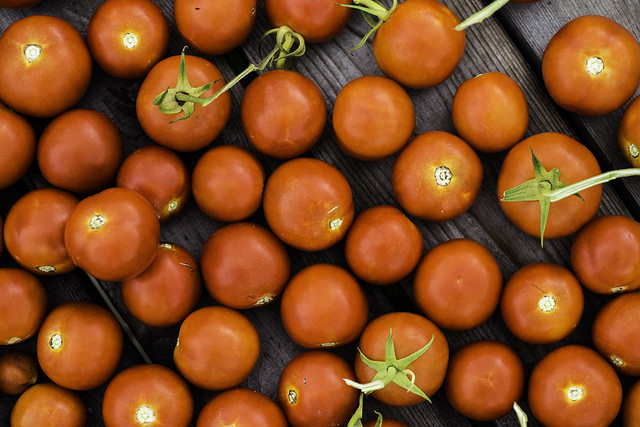
While fresh fruits and vegetables leading the way in organics for the past three decades, and accounting for 43% of U.S. organic food sales in 2012, dairy, bread, packaged foods, snack foods, meat, poultry, seafood, and even condiments are seeing an up-turn in organic sales.
For now, individuals are purchasing their organic foods primarily through conventional and natural food supermarkets and chains, according to the Organic Trade Association (OTA), but this is also changing as more people turn to food co-ops and even neighbors for fresh, organic food.
We’ve come a long way since the organic food movement’s beginnings. Yes, our grandparents and great-grandparents just grew… food. They didn’t even call it organic, though they often didn’t use pesticides or herbicides, and certainly not petroleum-based or chemical fertilizers.
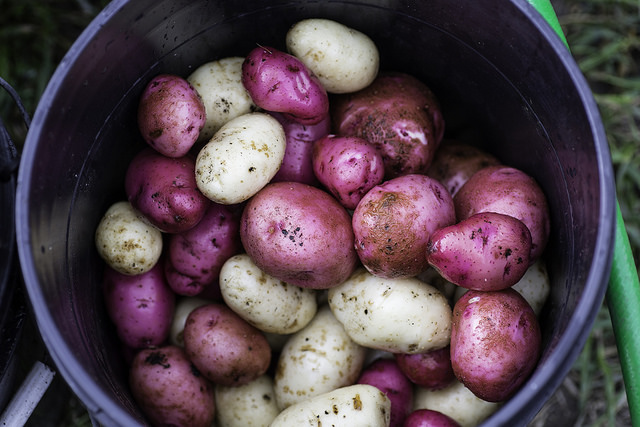
Indeed, growing our own food is becoming an absolutely essential part of our collective future.
In the same way that petrochemical companies don’t want to see the impending evolution of solar and wind power, Big Ag doesn’t want to accept what is happening with our food consciousness. We know better now, and so we ask for better. Our wallets are truly determining the future food landscape.
Report On Marijuana Overdose In 2015
Marijuana legalization has been the talk of North America for years now. It’s arguable that one of the biggest campaign promises made by Canada’s new Prime Minister, Justin Trudeau, was his goal to legalize cannabis countrywide. In the US, cannabis is legal in some form in 23 states, and with that we see a staggering number we should all consider. The number of Americans who fatally overdosed on cannabis in 2015 was: 0.
No one. Not a single person.
This of course is a huge increase from the year before which was also, zero. So it begs the questions: why is marijuana illegal? And why are other substances like alcohol and pharmaceuticals legal, yet they actively contribute to killing people in large numbers?
Hemp and cannabis became illegal back in 1937 for an all too common reason, it threatened the businesses of powerful people. You can grab the full ridiculously political story on that in an article I wrote about hemp and how they used cannabis to outlaw it back in 1937.
Legal Dangerous Substances
I’m not going to be one to say that it’s the substance’s fault all the time, because it’s not. I’m also not going to say whether things need to be legal or illegal right now. Instead I’m going to focus on the reality of what is happening.
Alcohol is legal, and very accessible in our society. It’s seen as a good time and something we can drink daily to relax after work. This year, the substance has aided in killing Americans at a rate that hasn’t been seen in roughly 35 years according to the Washington Post.[1] Reports state that more than 30,700 Americans died from alcohol-induced causes in 2015. This number does not include those who died as a result of alcohol related deaths like drunk driving or other accidents. If it did, the number would be close to 100,000.
According to a 2006 report in American Scientist, “alcohol is more lethal than many other commonly abused substances.” The report goes on to also mention:
Drinking a mere 10 times the normal amount of alcohol within 5 or 10 minutes can prove fatal, whereas smoking or eating marijuana might require something like 1,000 times the usual dose to cause death.
But it may not be fair to say that marijuana doesn’t have downsides because clearly it does. It’s speculated that it can cause brain developmental challenges in people under the age of 25 who smoke regularly, as it affects grey matter and it can of course also lead to drugged driving which can also be dangerous.[3] But are the dangers as bad as alcohol? And can we truly compare therapeutic values? What about when we look at pharmaceuticals?
Here are 2 graphs from the National Institute on Drug Abuse:


Looking at reported cases in the US, we see that prescription drugs prescribed by a doctor, as well as pain reliever addictions, have led to a combined 42,000 or so deaths in 2014. This is even more than alcohol! Strictly from a statistics point of view, prescription drugs, while having value in other areas, come with a great number of downsides and also happen to be the biggest business. Is there a conflict of interest in handing out these drugs when the ability to make money is attached? Do more drugs than are needed enter our society? The obvious answer is yes, when you look at how often drugs are not only wrongly prescribed, but are also the first option to fix something fickle before we even look at the potential behind lifestyle changes.
Public Demand
Although the public in North America in general seems to be pushing for the legalization of marijuana, it is still opposed heavily. Some groups include the pharmaceutical lobby, who would lose big in profits, as well as police unions who would lose federal budget for the war on drugs. You can begin to see our society runs less on common sense and more on political and monetary rigidity with groups all working against each other in their own interest.
But to be honest, legalization is a whole other topic, because I believe it is not quite as good as people hype it up to be. Some challenges that would come in include who controls marijuana growth, the quality of what is made available, and the manipulation of that product.
Interestingly enough, among all 2016 presidential contenders, Democratic hopeful Sen. Bernie Sanders (I-Vt.) is the only one who outright supports the legalization of marijuana. As of now the substance is classified as a Schedule 1 drug, up there with heroin and LSD. (which is a whole other topic of discussion)
Final Note
Entirely blaming a substance for the cause of people’s deaths and addictions is not an effective way of looking at the problem, nor is regulation of those substances going to be the answer in helping people. We have a large disconnect in our society in helping people with mental, emotional, and physical challenges and we are obsessed with isolating issues into black and white when most of the time they are not. I believe many of these deaths are a sign of other challenges in our society that we are opposed to looking at such as a lack of enjoyment and fulfilment in our jobs, not doing what we love, not processing our emotions, treating illness as purely physical and so forth. Until we can address many of these factors and implement solutions, we will always be creating addicts who find substances to get addicted to in order to compensate for other areas of their lives. This isn’t to say things like alcohol and prescriptions drugs are good and therefore should be so easily available to people, but more so to suggest that we all look at the full picture.
Sources:
2. https://www.americanscientist.org/libraries/documents/200645104835_307.pdf
3. http://www.thecannabist.co/2014/11/17/marijuana-young-brain-study/23251/
H/T: http://www.huffingtonpost.com/entry/marijuana-deaths-2014_56816417e4b06fa68880a217


